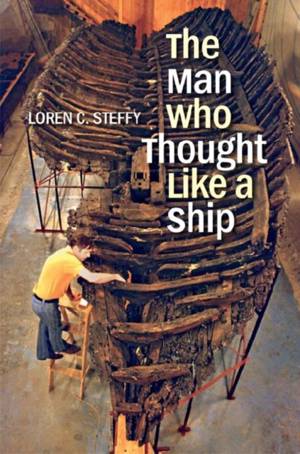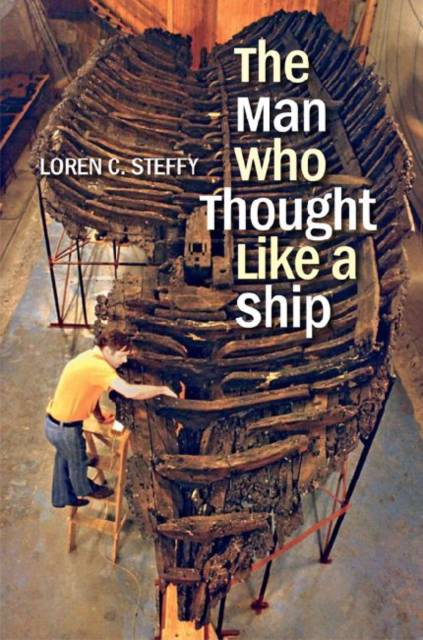
- Retrait gratuit dans votre magasin Club
- 7.000.000 titres dans notre catalogue
- Payer en toute sécurité
- Toujours un magasin près de chez vous
- Retrait gratuit dans votre magasin Club
- 7.000.000 titres dans notre catalogue
- Payer en toute sécurité
- Toujours un magasin près de chez vous
Description
J. Richard "Dick" Steffy stood inside the limestone hall of the Crusader castle in Cyprus and looked at the wood fragments arrayed before him. They were old beyond belief. For more than two millennia they had remained on the sea floor, eaten by worms and soaking up seawater until they had the consistency of wet cardboard. There were some 6,000 pieces in all, and Steffy's job was to put them all back together in their original shape like some massive, ancient jigsaw puzzle.
He had volunteered for the job even though he had no qualifications for it. For twenty-five years he'd been an electrician in a small, land-locked town in Pennsylvania. He held no advanced degrees--his understanding of ships was entirely self-taught. Yet he would find himself half a world away from his home town, planning to reassemble a ship that last sailed during the reign of Alexander the Great, and he planned to do it using mathematical formulas and modeling techniques that he'd developed in his basement as a hobby.
The first person ever to reconstruct an ancient ship from its sunken fragments, Steffy said ships spoke to him. Steffy joined a team, including friend and fellow scholar George Bass, that laid a foundation for the field of nautical archaeology. Eventually moving to Texas A&M University, his lack of the usual academic credentials caused him to be initially viewed with skepticism by the university's administration. However, his impressive record of publications and his skilled teaching eventually led to his being named a full professor. During the next thirty years of study, reconstruction, and modeling of submerged wrecks, Steffy would win a prestigious MacArthur Foundation "genius" grant and would train most of the preeminent scholars in the emerging field of nautical archaeology.
Richard Steffy's son Loren, an accomplished journalist, has mined family memories, archives at Texas A&M University and elsewhere, his father's papers, and interviews with former colleagues to craft not only a professional biography and adventure story of the highest caliber, but also the first history of a field that continues to harvest important new discoveries from the depths of the world's oceans.
He had volunteered for the job even though he had no qualifications for it. For twenty-five years he'd been an electrician in a small, land-locked town in Pennsylvania. He held no advanced degrees--his understanding of ships was entirely self-taught. Yet he would find himself half a world away from his home town, planning to reassemble a ship that last sailed during the reign of Alexander the Great, and he planned to do it using mathematical formulas and modeling techniques that he'd developed in his basement as a hobby.
The first person ever to reconstruct an ancient ship from its sunken fragments, Steffy said ships spoke to him. Steffy joined a team, including friend and fellow scholar George Bass, that laid a foundation for the field of nautical archaeology. Eventually moving to Texas A&M University, his lack of the usual academic credentials caused him to be initially viewed with skepticism by the university's administration. However, his impressive record of publications and his skilled teaching eventually led to his being named a full professor. During the next thirty years of study, reconstruction, and modeling of submerged wrecks, Steffy would win a prestigious MacArthur Foundation "genius" grant and would train most of the preeminent scholars in the emerging field of nautical archaeology.
Richard Steffy's son Loren, an accomplished journalist, has mined family memories, archives at Texas A&M University and elsewhere, his father's papers, and interviews with former colleagues to craft not only a professional biography and adventure story of the highest caliber, but also the first history of a field that continues to harvest important new discoveries from the depths of the world's oceans.
Spécifications
Parties prenantes
- Auteur(s) :
- Editeur:
Contenu
- Nombre de pages :
- 256
- Langue:
- Anglais
- Collection :
Caractéristiques
- EAN:
- 9781603446648
- Date de parution :
- 19-03-12
- Format:
- Livre relié
- Format numérique:
- Genaaid
- Dimensions :
- 165 mm x 241 mm
- Poids :
- 576 g







